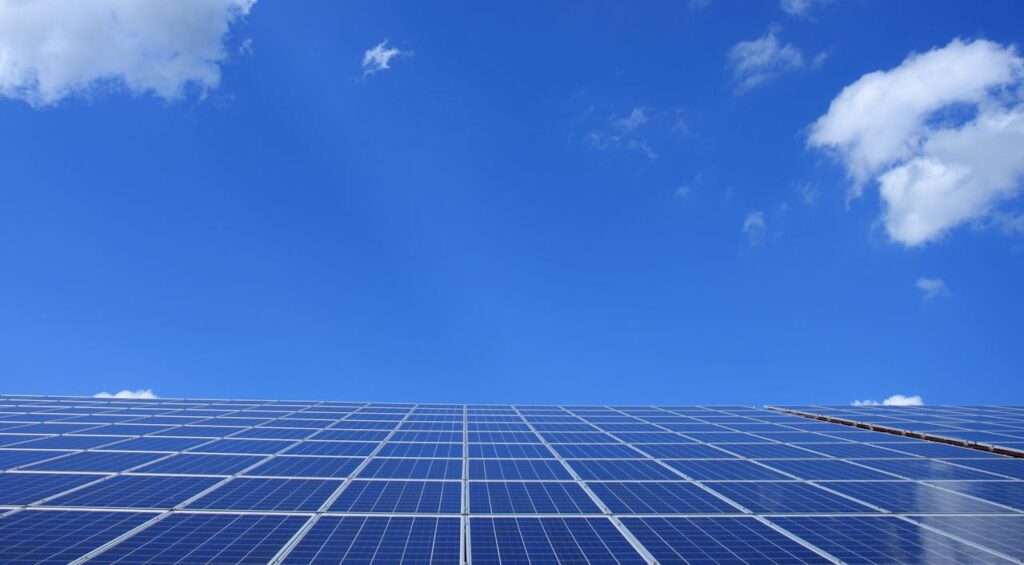Many of our readers often ask, ‘How does solar energy work?’ The answer lies primarily in photovoltaic solar cells. A solar photovoltaic (PV) array consists of hundreds of these cells. These solar cells, or photovoltaic cells, convert sunlight into electricity, which then powers your home’s solar energy system.
The term “photovoltaic solar cells” is used because “photo” derives from the Greek word for “light,” and “voltaic” refers to Alessandro Volta, a pioneer in electricity.
7 Popular Types of Solar Cells
- Silicon Solar Cells
- Monocrystalline Silicon Cells
- Polycrystalline Solar Cells
- Thin-Film Solar Cells
- Amorphous Silicon Cells
- Cadmium Telluride Cells
- Copper Indium Gallium Selenide Cells
Solar cells are made of materials with semiconducting properties that, when exposed to sunlight, excite electrons, generating an electrical current. Although there are numerous variations of solar cells, the two most prevalent types are crystalline silicon (including both monocrystalline and polycrystalline) and those utilizing thin-film technology.
-
Silicon-Based Solar Cells
Most solar cells available today are made from silicon – it is estimated that around 90% of all solar cells use silicon. Silicon can be found in various forms, primarily differing in purity, which refers to the arrangement of the silicon modules.
Higher silicon purity results in more efficient conversion of sunlight into electricity. Approximately 95% of silicon-based solar cells on the market are made of crystalline silicon, making it the most prevalent type. Crystalline silicon itself comes in two forms: monocrystalline and polycrystalline.
-
Single Crystalline Silicon Solar Cell
Monocrystalline solar cells, also known as ‘single crystalline’ cells, are easily identifiable by their distinct coloring. Their uniqueness comes from being made from a highly pure form of silicon.In the world of silicon, higher purity in molecular alignment translates to greater efficiency in converting sunlight to electricity. Monocrystalline solar cells, the most efficient type, have efficiencies of over 20%.
These cells are made from ‘silicon ingots,’ cylindrical structures designed to maximize performance. By cutting four sides from these ingots, manufacturers produce silicon wafers with rounded edges for monocrystalline panels, unlike the square edges of other solar cells.
Monocrystalline cells offer the highest efficiency and are also the most space-efficient, requiring fewer cells to produce the same electrical output. Consequently, these solar arrays occupy less space relative to their energy generation.
Moreover, monocrystalline solar cells are the most durable, with many systems coming with warranties of up to 25 years.
However, the superior performance comes at a premium. Monocrystalline panels are the priciest solar cells, which makes polycrystalline and thin-film options more appealing for those looking for cost-effective solutions. The high expense is partly due to the fact that the cylindrical ingots’ cutting process results in substantial silicon waste, sometimes more than 50%.
-
Solar Cells Made from Polycrystalline Silicon
Polycrystalline solar cells, sometimes called polysilicon or multi-silicon cells, were the initial type of solar cells introduced in 1981. Unlike the cutting process used for monocrystalline cells, polycrystalline cells are made by melting silicon and pouring it into a square mold, which gives them their square shape and makes them a more cost-effective option with minimal silicon waste.
However, polycrystalline cells are less efficient than monocrystalline cells, with efficiency levels typically between 13-16% due to the lower purity of the silicon. They are also less space-efficient and have a lower heat tolerance, which can lead to reduced performance in hot climates.
-
Thin Film Photovoltaic Panels
One emerging type of solar cell technology is the thin-film solar cell, which saw significant growth of about 60% from 2002 to 2007. By 2011, thin-film solar cells made up around 5% of the market.
These cells generally achieve efficiencies between 7-13%, though ongoing research aims to boost these figures to as high as 16% in future models. Thin-film solar cells use various semiconducting materials layered in thin films, including silicon, to capture sunlight.
A major advantage of thin-film technology is its lower production cost compared to crystalline cells, due to simpler mass production processes. Additionally, the flexibility of thin-film cells opens up new applications where flexible materials are beneficial. However, they require more space for installation, making them less suitable for residential settings and more favorable for commercial use. Furthermore, thin-film solar cells tend to have shorter lifespans and warranties compared to crystalline solar cells. They employ materials like amorphous silicon, cadmium telluride, and copper indium gallium selenide, each suited for different solar energy needs.
-
Thin-Film Amorphous Silicon Solar Panels
Amorphous silicon thin-film solar cells have traditionally been used for small-scale applications such as pocket calculators, travel lights, and camping gear for remote areas. Recent advancements, like the ‘stacking’ technique, which involves layering multiple amorphous silicon cells, have improved their efficiency to about 8%. However, this increased efficiency still comes with a relatively high cost.
-
Cadmium Telluride PV Panels
Cadmium Telluride is the only thin-film technology that competes on cost with crystalline silicon panels, and recent advancements have even made some cadmium telluride models more cost-effective. These cells typically achieve efficiency levels between 9% and 11%.
-
Copper-Indium-Gallium-Selenium Solar Panels
Copper Indium Gallium Selenide (CIGS) cells show promising efficiency levels of 10-12%, similar to those of crystalline solar technologies. However, this technology is still emerging and has not yet been widely adopted commercially, with most of its current applications being in larger-scale or commercial projects.



























